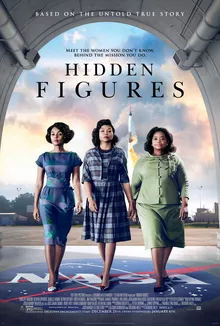Historical accuracy of Hidden Figures

Historical accuracy of Hidden Figures

Characters
Katherine Johnson
Johnson was a real, brilliant mathematician crucial to NASA. However, some specific incidents like the bathroom runs were fabricated or belonged to others' experiences for dramatic effect.
Dorothy Vaughan
Vaughan was a real supervisor and FORTRAN expert. The film accurately shows her foresight regarding computers but condenses the timeline; she became a supervisor in 1949, much earlier than depicted.
Mary Jackson
Jackson was NASA's first black female engineer. She did have to petition to attend segregated classes, though the film dramatizes the process slightly.
Al Harrison
Harrison is a fictional composite character, based on three different NASA directors at Langley. The famous bathroom sign scene involving him never happened.
Vivian Mitchell
Mitchell is a fictional character representing the attitudes and obstacles faced by women like Vaughan from some white colleagues and supervisors.
Paul Stafford
Stafford is a fictional composite character meant to embody the racial and gender biases Katherine Johnson encountered from some male colleagues.
More characters
Jim Johnson
Colonel Jim Johnson was Katherine's second husband; their courtship and marriage are based on reality.
John Glenn
The portrayal of astronaut John Glenn, including his specific request for Katherine Johnson to verify the IBM calculations, is historically accurate.
Levi Jackson
Levi Jackson Sr. was Mary Jackson's real husband.
Story
Segregation laws enforced at NASA Langley
Virginia had segregation laws, and early NACA/NASA facilities were segregated. However, NASA facilities were integrated in 1958, before the main events depicted (1961-62).
Katherine ran far to use segregated bathroom
This specific experience (running half a mile) happened to Mary Jackson, not Katherine. Katherine ignored segregated signs and used the unmarked white bathrooms.
Al Harrison destroys "Colored Ladies Room" sign
This scene is fictional; the character is fictional, and segregation officially ended earlier. Real acts of defiance included women removing signs themselves.
John Glenn requests Katherine verify calculations
Glenn did famously ask for Johnson ("the girl") to manually check the IBM computer's trajectory calculations before his orbital flight.
Katherine uses Euler's Method for calculations
The film correctly references the types of advanced mathematics, including numerical methods like Euler's, that Johnson and others used for trajectory analysis.
Dorothy Vaughan learns/teaches FORTRAN
Vaughan did foresee the importance of machine computers, learned FORTRAN, and trained her group. However, the film dramatizes how she accessed the IBM machine.
Mary Jackson gets court permission for school
Jackson did have to petition the City of Hampton for special permission to attend segregated graduate-level courses at Hampton High School.
Johnson, Vaughan, Jackson are close friends
While they worked at Langley during the same era, the film portrays them as closer friends working together simultaneously than they likely were.
Film compresses events into 1961-1962
Key events (Vaughan's promotion, Jackson becoming engineer) happened years before the film's timeline. The film condenses decades of achievements for narrative.
Katherine denied credit initially
While Paul Stafford is fictional, the resistance Katherine faced regarding authorship on reports reflects real challenges women encountered in getting credit.
Existence of West Area Computing Unit
The segregated West Area Computing unit, where African American female mathematicians initially worked, was real.
Katherine excluded from Pentagon/Mission briefings
Johnson faced barriers due to her race and gender and had to push assertively to be included in important briefings and meetings traditionally closed to women.
Intense pressure of the Space Race depicted
The film accurately conveys the high-stakes, competitive atmosphere between the US and Soviet Union during the early Space Race.
Setting
Early 1960s NASA Langley environment
The film successfully recreates the look and feel of the Langley Research Center during the pivotal Mercury program era.
Segregated facilities (restrooms, etc.)
Reflects the reality of Jim Crow laws in Virginia during the period, although integration at NASA occurred before the film's main timeframe.
Costumes, hairstyles, and cars
The production design accurately reflects the styles and aesthetics of the early 1960s United States.
Use of mechanical calculators
Before widespread electronic computers, complex calculations were done by hand and with mechanical aids like the Monroe calculators shown.
Depiction of "Human Computers" role
The film accurately portrays the vital role these mathematicians (often women) played in performing calculations before electronic computers.
Introduction of IBM mainframe computers
Shows the significant transition phase from human computation to electronic computing with large machines like the IBM 7090.
Atmosphere of Cold War/Space Race
Captures the national urgency, technological ambition, and underlying tensions of the era effectively.
